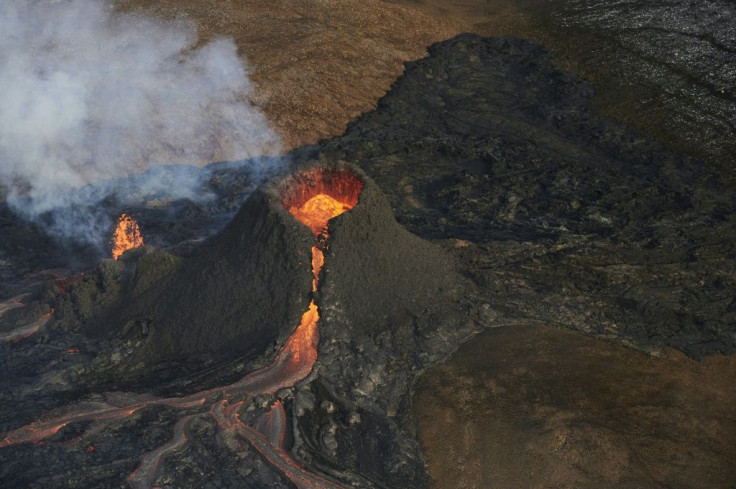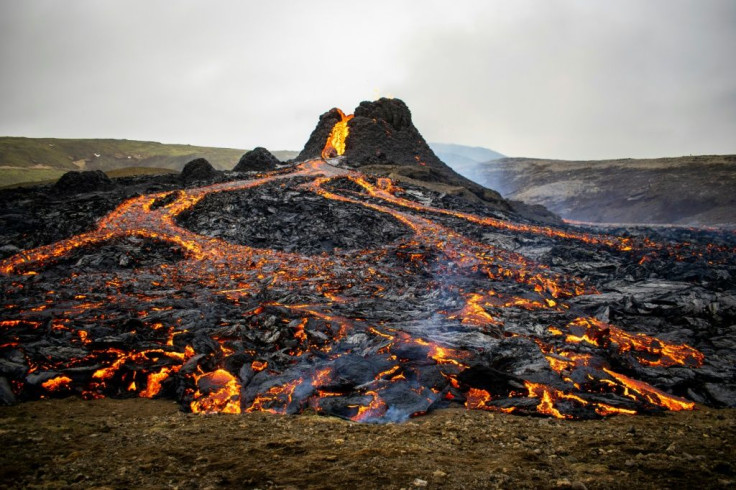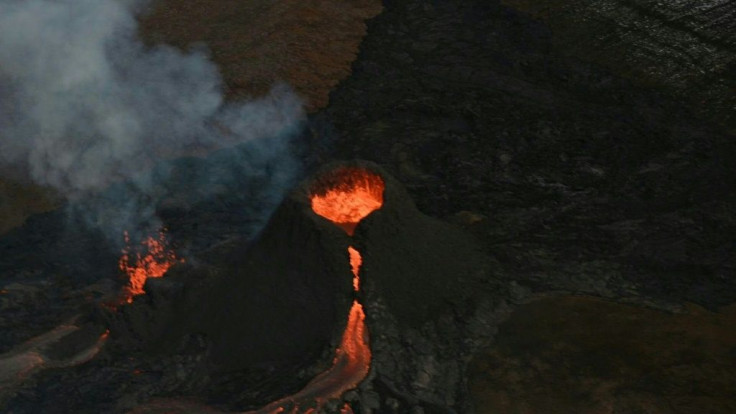Iceland's Volcanic Eruption Could Be A Long Hauler
A volcanic eruption in Iceland has transformed a tranquil green valley into an ominous-looking scene, its first dark secrets beginning to emerge as volcanologists suggest the eruption could last longer than previously thought.
Experts had initially predicted that the eruption of the fissure near Mount Fagradalsfjall, just 40 kilometres (25 miles) from the capital Reykjavik, would be brief, likely dying out after a few days.
But due to the constancy of the lava flow and based on the first analyses of the magma, they now suspect the eruption could be a long-hauler.
"The eruption rate has been similar since the beginning of the eruption" on March 19, Freysteinn Sigmundsson, a geophysicist at the Institute of Earth Sciences, told AFP.
"We have started to wonder if it may eventually be a long duration eruption."
The relatively controlled lava flow has since the weekend drawn hordes of curious onlookers to the Geldingadalur valley, eager to catch a rare, first-hand glimpse of the hypnotic display of bubbling orange-red molten rock.

The authorities block access only sporadically in case of bad weather or high levels of toxic gas emissions.

According to preliminary calculations, the magma emerging from the volcano is almost 1,190 degrees Celsius (2,170 degrees Farenheit).
Daredevil spectators who hike 90 minutes from the nearest road have grilled sausages, bacon and marshmallows on the hot lava as it cools to basalt rock.
A scientific study of the freshly-minted basalt suggests that the magma has come from deep within the Earth's mantle, around 15 kilometres (nine miles) beneath the surface.

Magma from a source this deep has not been seen in this region for thousands of years, Sigmundsson said.
"Most magmas make their way to the crust by creating their own lineals, by evolving. This magma is coming straight up," explained volcanologist Thorvaldur Thordarson.
And more importantly, the underground lava flow is similar to the one being seen above ground, suggesting the eruption could be protracted, he said.

"In a system where the inflow is the same as the outflow, you can keep that (going) for a long time."
"In my view, this eruption has potential to sustain itself for quite a long time," he said.
Because of the location of the eruption -- a natural basin in an uninhabited area -- experts said a lengthy eruption poses no significant danger to surrounding areas.
Flowing at its current rate, it would take weeks for the lava to reach the closest road, they said.
While Iceland has more active volcanoes than any other country in Europe, the Reykjanes peninsula has not experienced an eruption since the 13th century.
The last one lasted about 30 years, from 1210 to 1240.
A reawakening of the sector could signal the beginning of a new period "which may last centuries with eruptions, possibly 10 years to 100 years apart," according to University of Iceland geophysicist Magnus Tumi Gudmundsson.
The region is already popular with tourists for its famed Blue Lagoon geothermal spa.
The first signs of renewed seismic activity in the region appeared a little more than a year ago, before intensifying about a month ago -- an indication that the magma was nearing the surface.
The eruption, located about a dozen kilometres from the closest town, the Grindavik fishing port, has grown more spectacular by the day.
The magma spewing out of a crack in the ground has formed small hills over the past week as it cools, creating two vents ejecting the lava, the biggest one measuring 20 metres.
The site is relatively safe for visitors, although the authorities are keeping a close eye on toxic emissions.
© Copyright AFP 2024. All rights reserved.





















